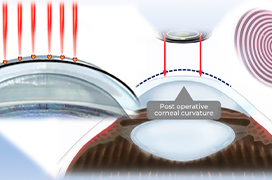Refractive surgery with excimer laser has been a very common surgical procedure worldwide during the last decades. Currently, patients who underwent refractive surgery years ago are older, with a growing number of them now needing cataract surgery. To establish the power of the intraocular lens to be implanted in these patients, it is essential to define the true corneal power. However, since the refractive surgery modified the anterior, but not the posterior surface of the cornea, the determination of the corneal power in this group of patients is challenging. This article reviews the different sources of error in finding the true corneal power in these cases, and comments on several approaches, including the clinical history method as described originally by Holladay, and a modified version of it, as well as new alternatives based on corneal tomography, using devices that are able to measure the actual anterior and posterior corneal curvatures, which have emerged in recent years to address this issue.
- Determination of Corneal Power After Refractive Surgery with Excimer Laser: A Concise Review
- Diabetic Macular Edema – Diagnostics and Treatment Guidelines
- Diabetic Retinopathy – Diagnostics and Treatment Guidelines
- Diabetic Retinopathy and Diabetic Macular Edema – Screening
- Use of Corneal Topography in Pediatric Ophthalmology
- Torpedo Maculopathy. A Case Report

